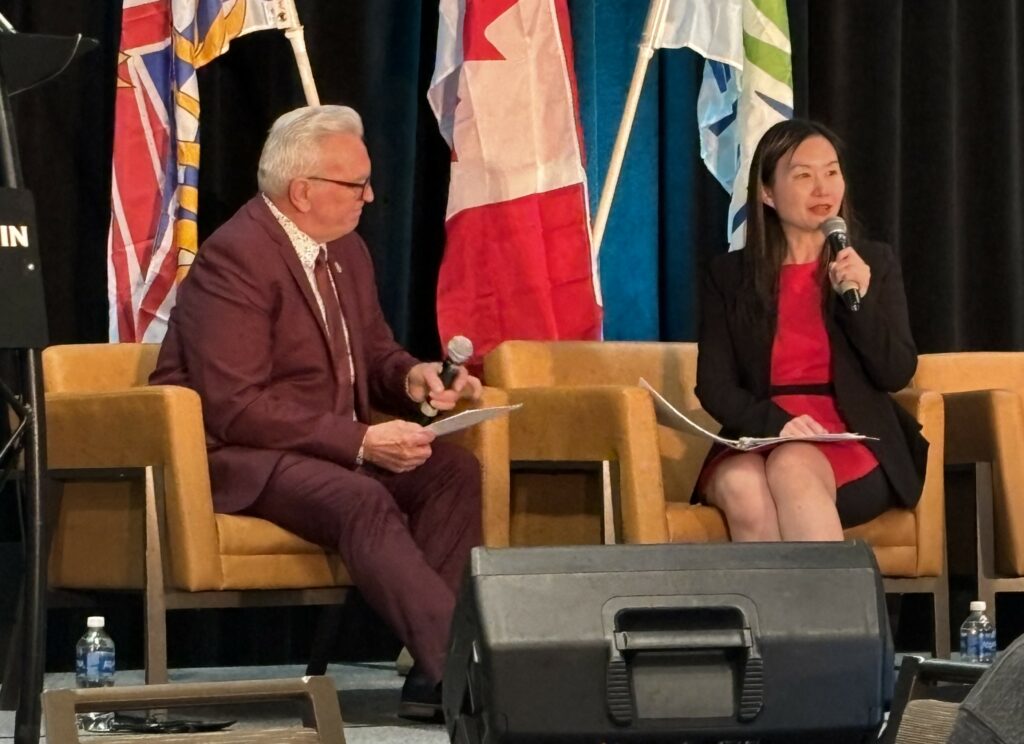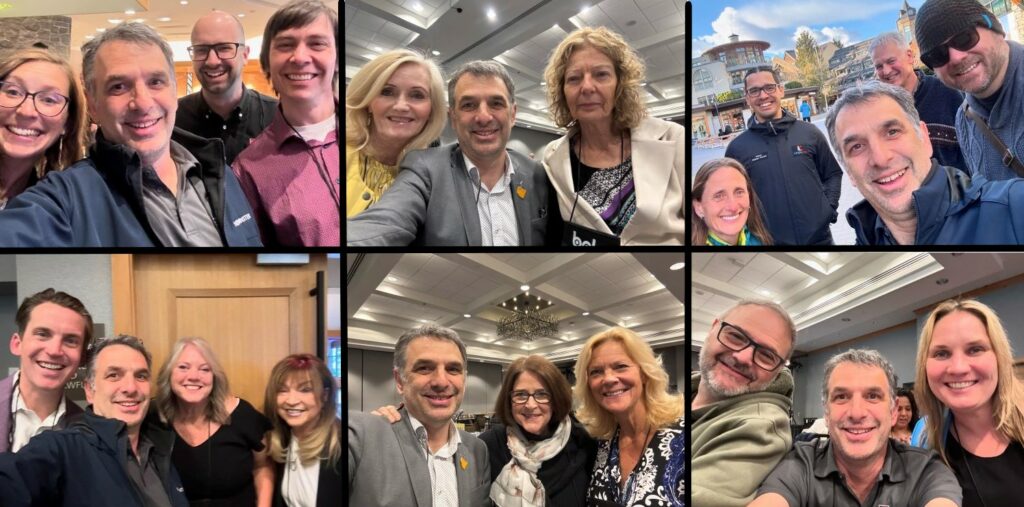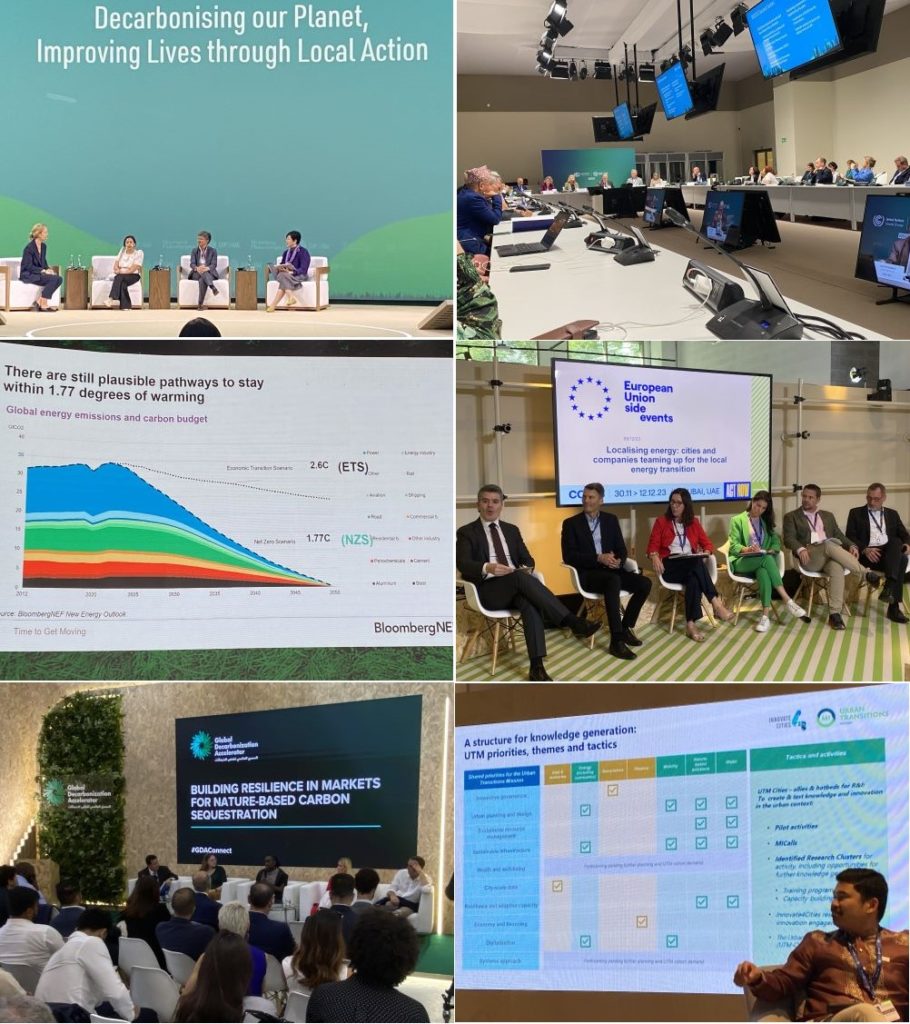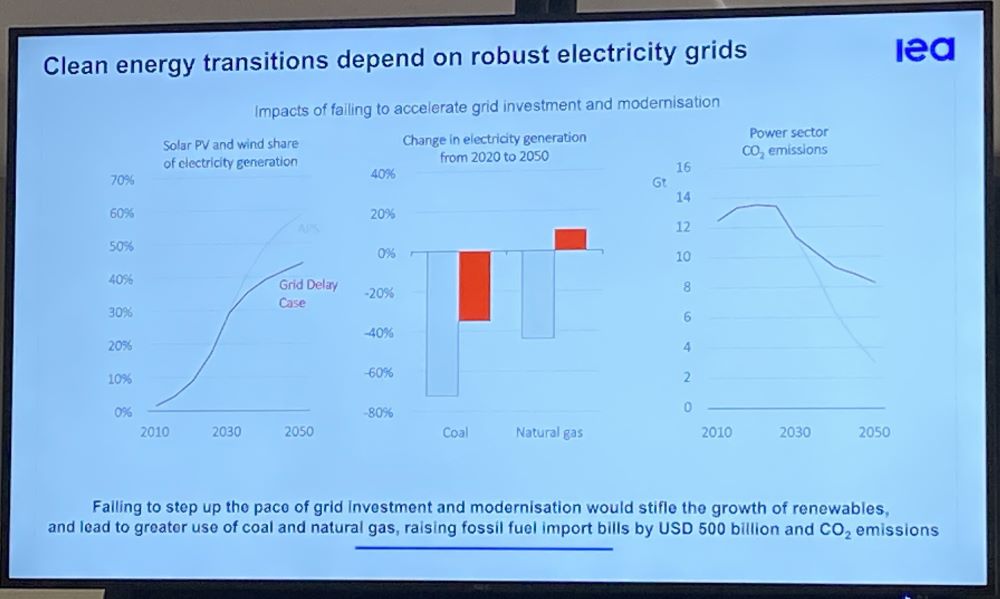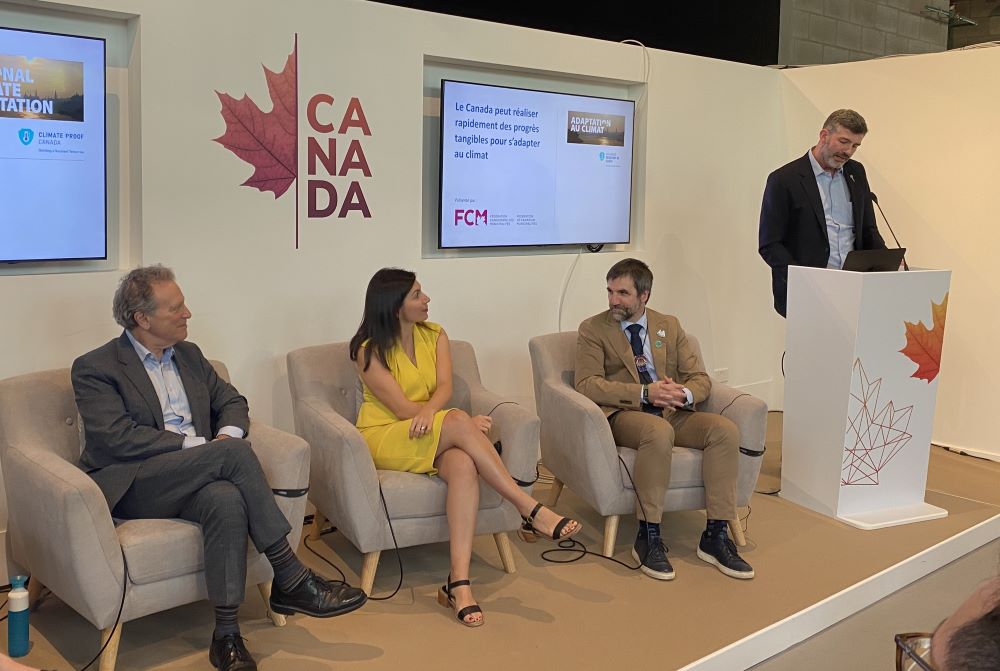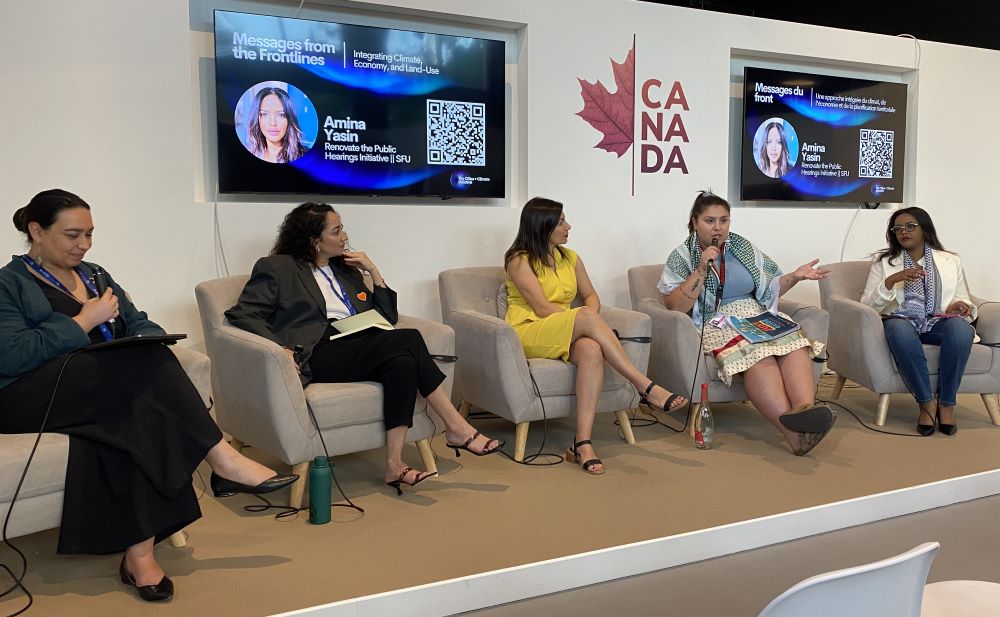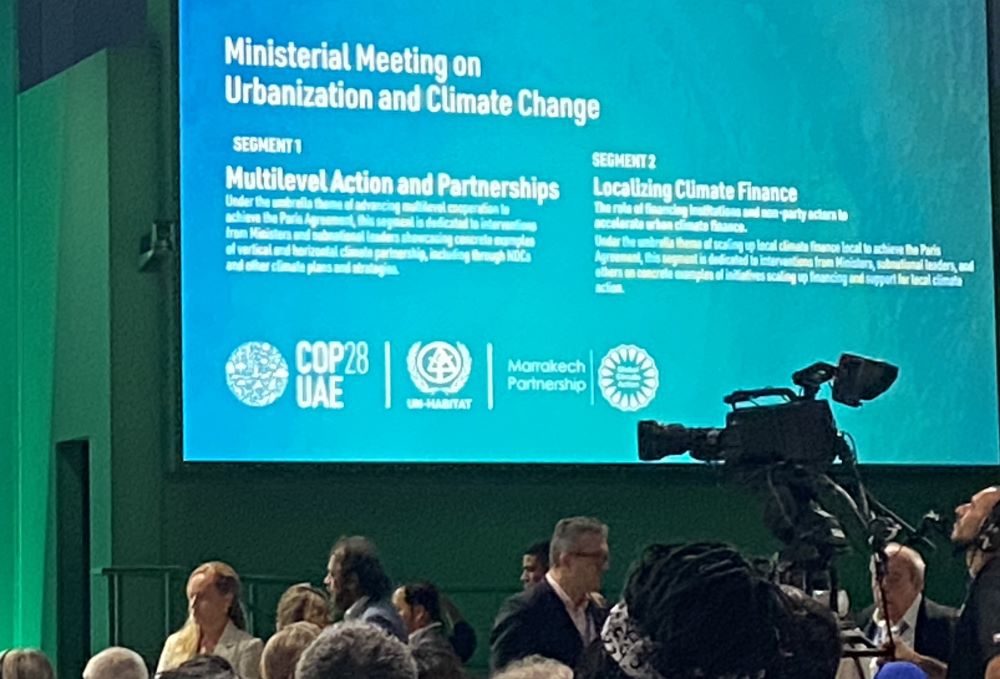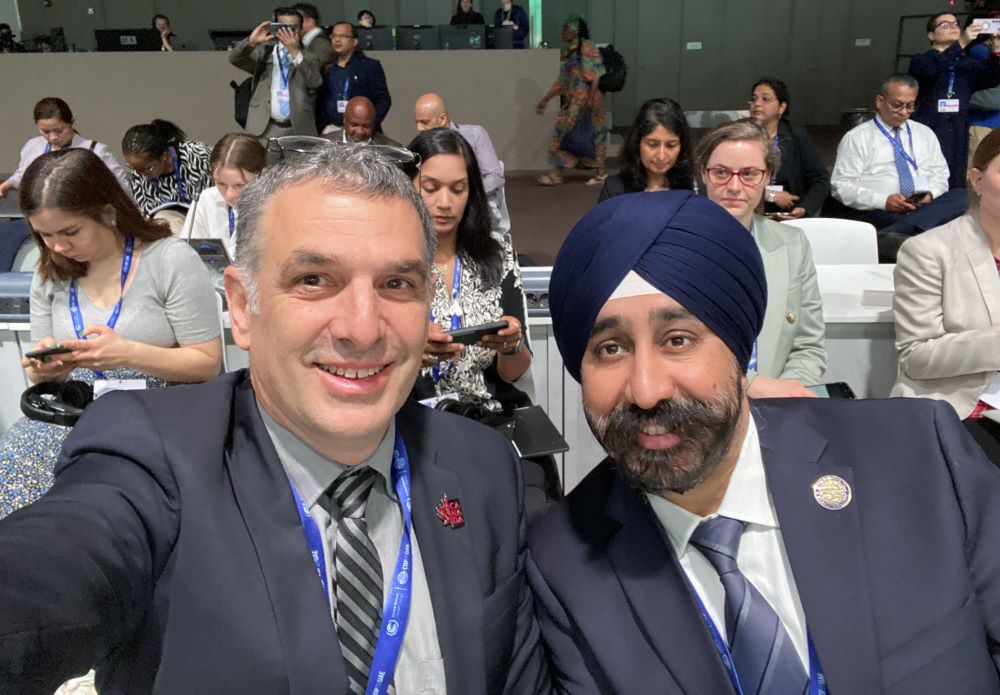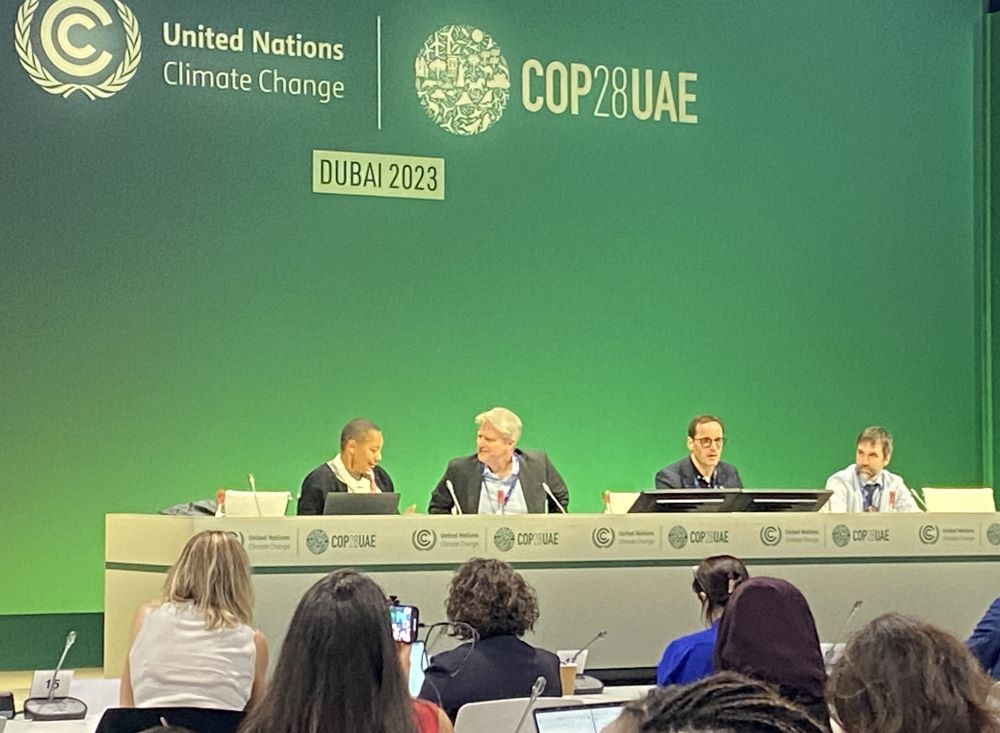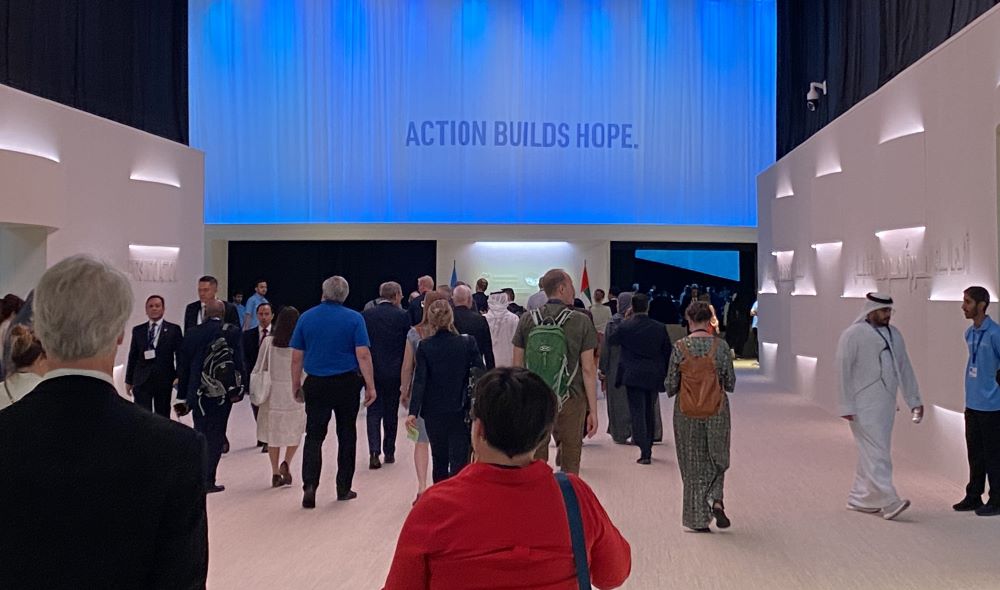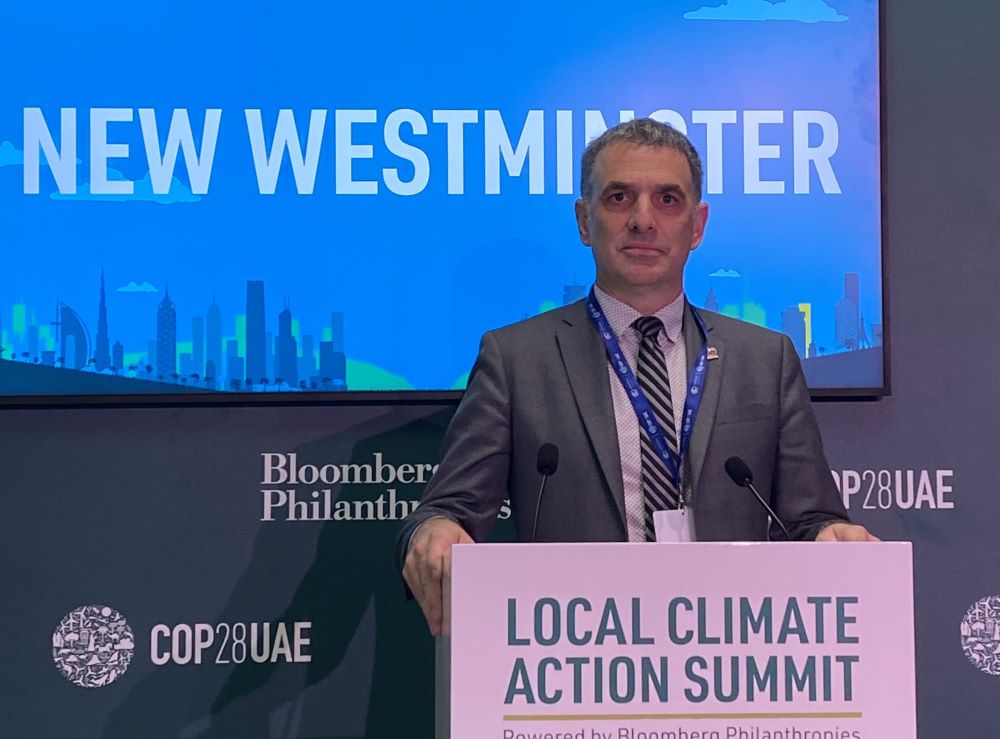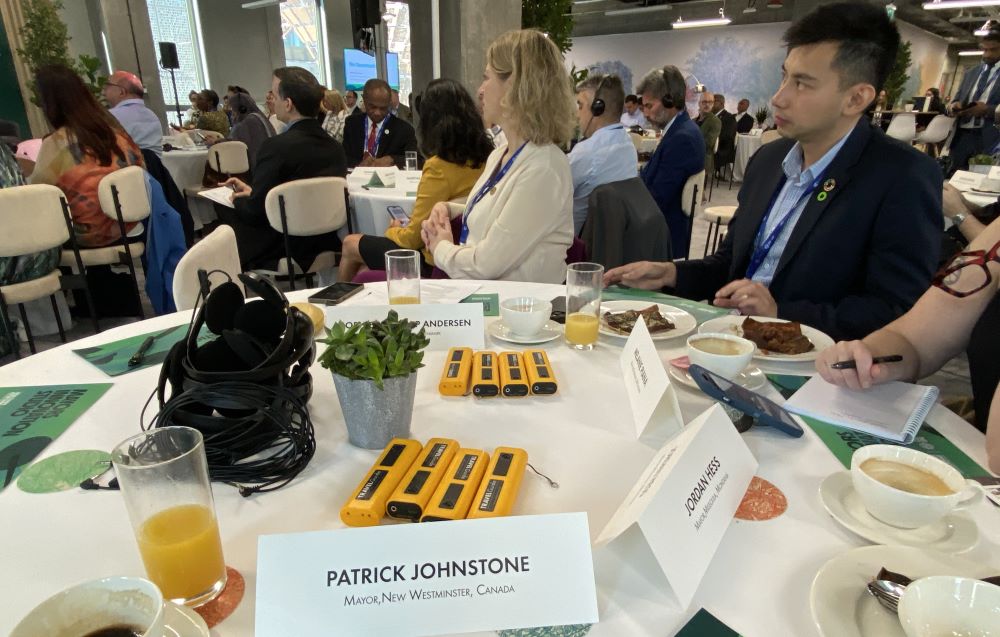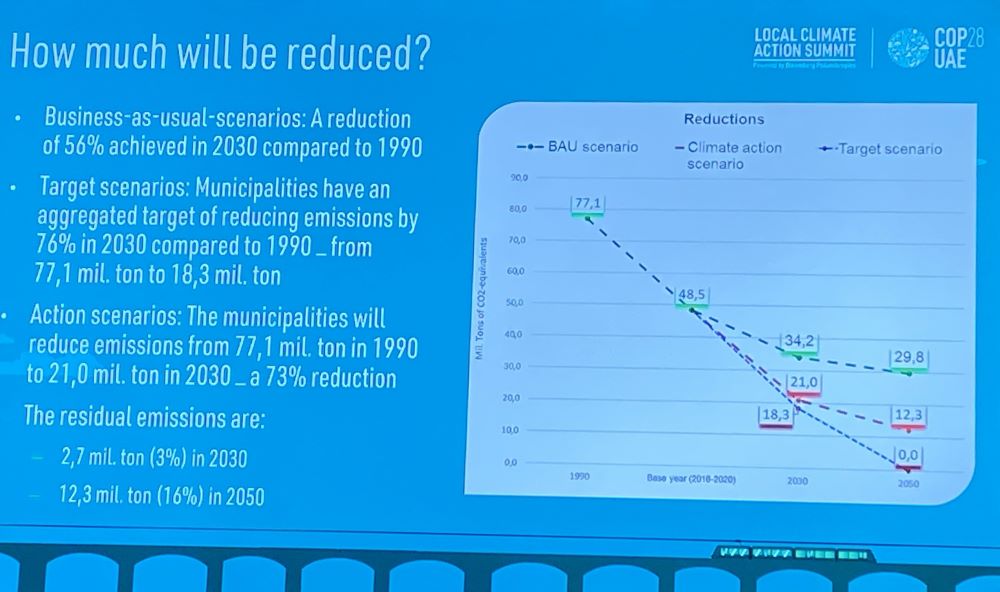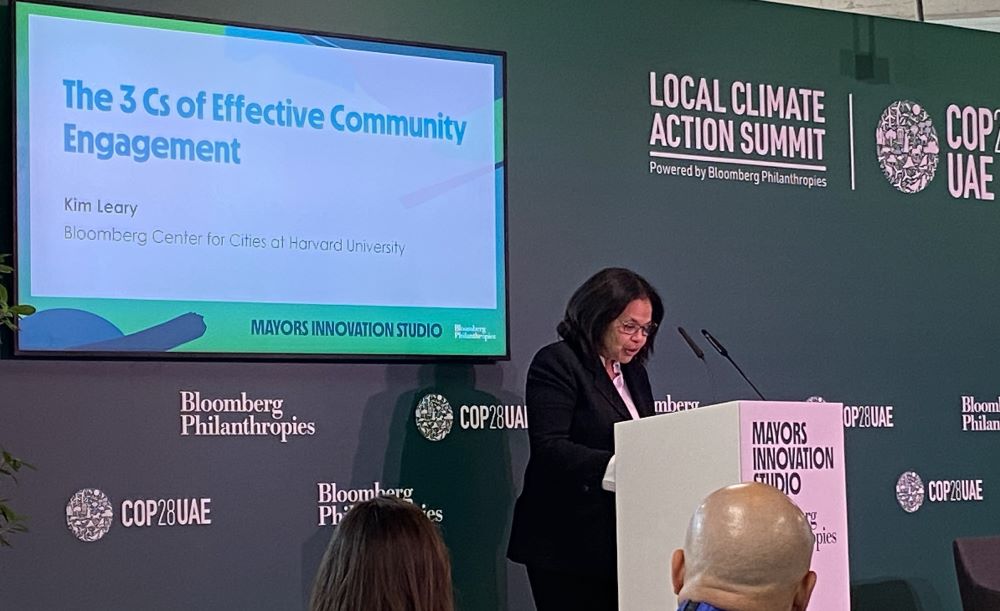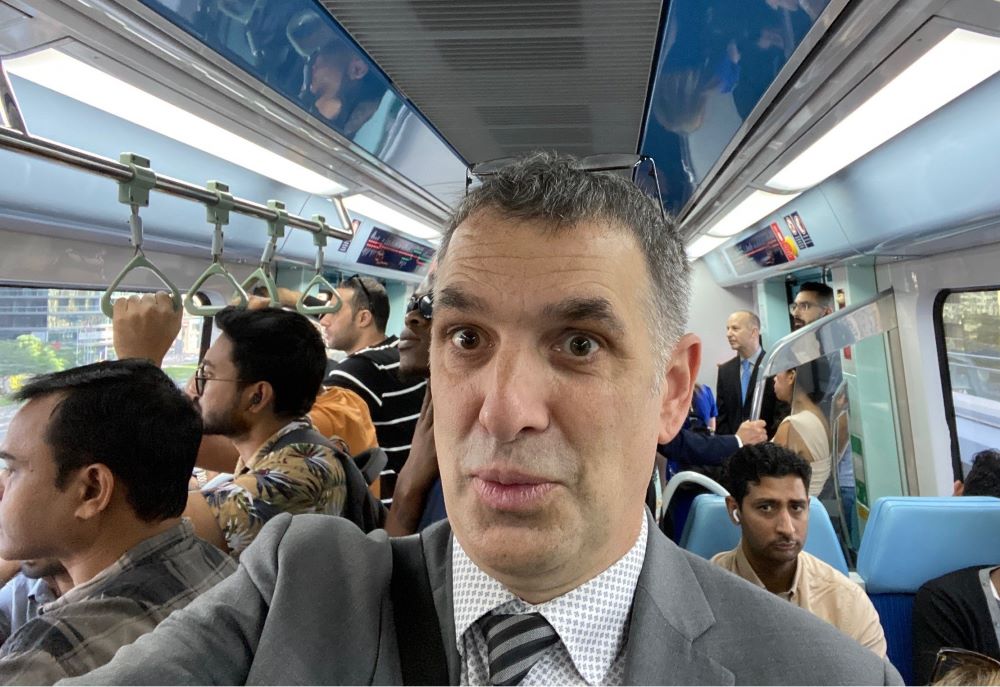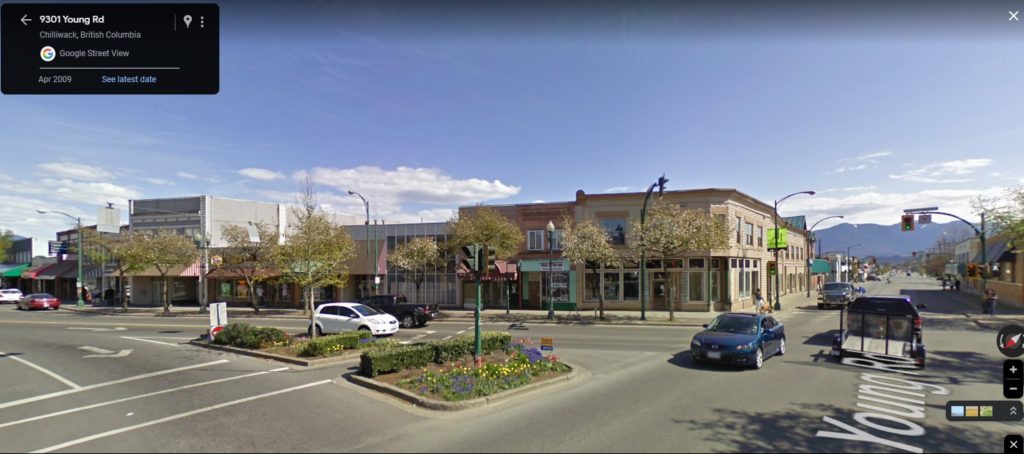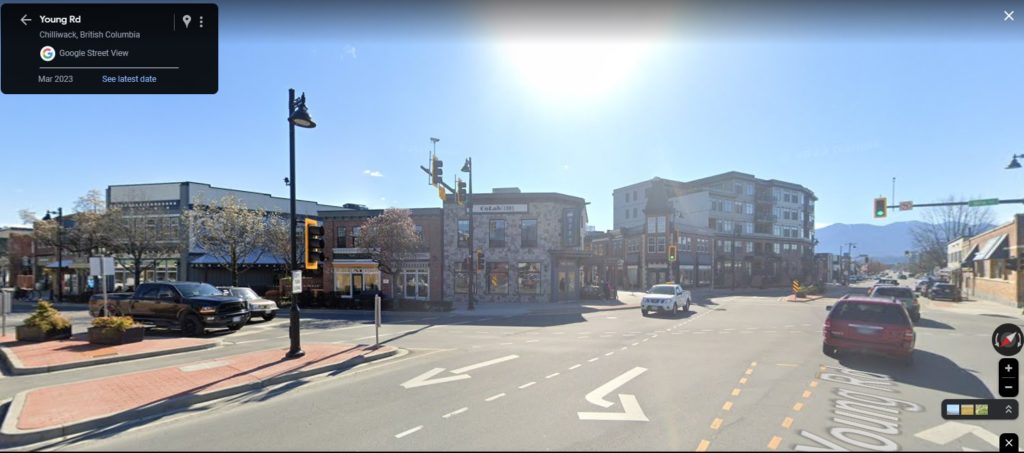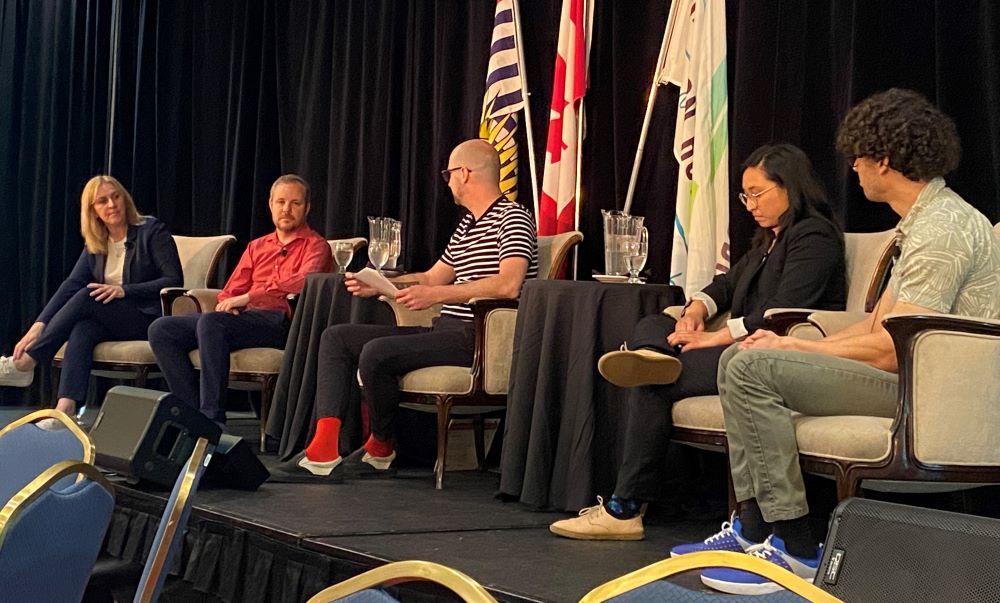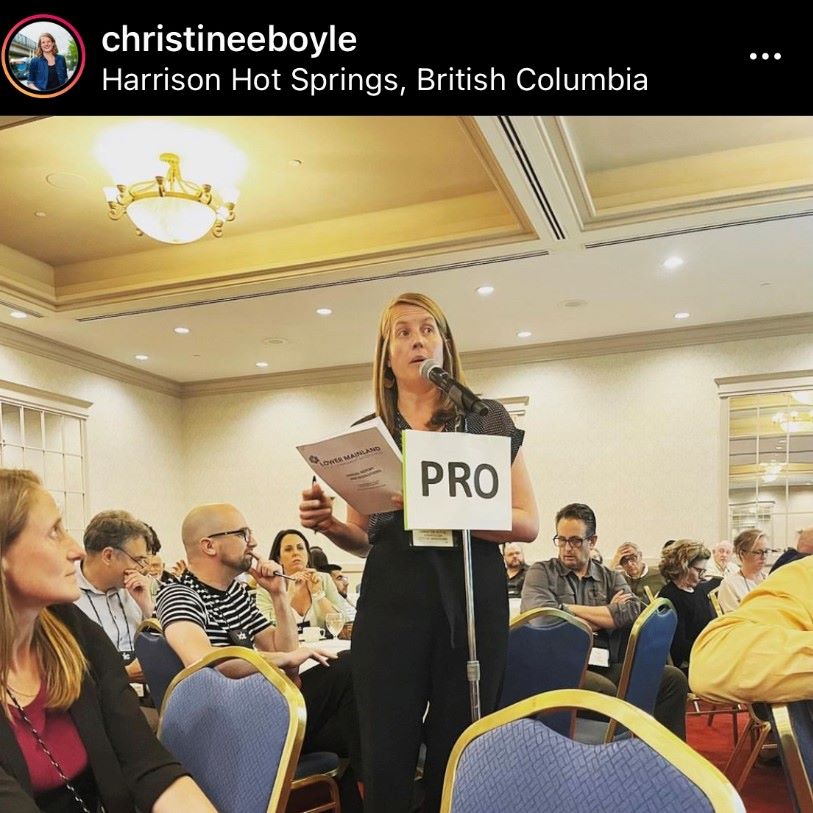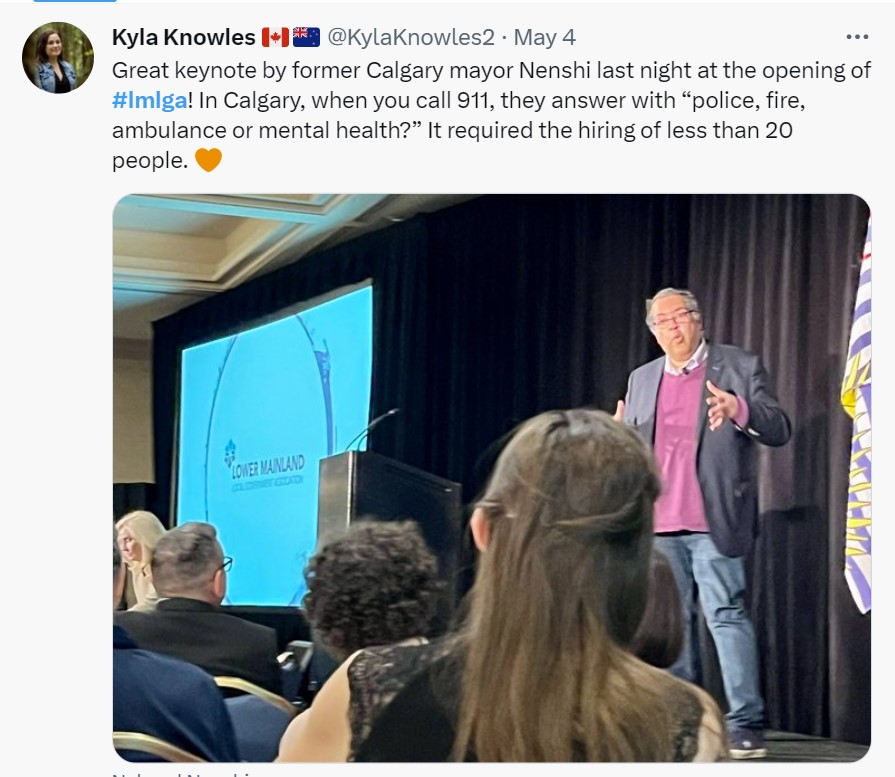June’s been a very busy month with little time to get a bike ride in or write about the things going on. The long weekend couldn’t come fast enough, and I got a nice long bike ride in on Saturday, so here is another piece of catching up, sorry it took a month to get here!

Back in the beginning of June, Councillor Henderson and I attended the annual Federation of Canadian Municipalities meeting in Calgary. I gave a bit of a photo preview here, and people who subscribe to my Newsletter got my summary of the politics part of the program, so that leaves this post as a bit of a broad overview and my highlights from the meeting.
FCM is the annual meeting of local government leaders from across Canada. As Lower Mainland LGA is for the Lower Mainland, and UBCM is for the province of BC, FCM is a chance for us to get together, attend tours, workshops and panels to learn what’s happening in other jurisdictions, share our successes, challenges and opportunities, and do some networking. It is also an opportunity for us to meet with national agencies (the Federal Government, Railways, Ports, etc.) and talk though issues or opportunities.

FCM is not my favorite conference. The municipal-federal relationship is a bit less clear than the municipal-provincial one, and FCM tends to skew towards the rural, with many more representatives from small towns in the Prairies and Ontario than there are form the urban areas with who we share challenges and opportunities. This year provided a couple of unique opportunities to talk to folks about train whistle cessation, the Green Municipal Fund, and some other funding opportunities in the transportation and housing files that tipped the balance towards attending in Calgary. Those conversations, still being preliminary, I will be talking more about in the near future.
Solar Energy
As a member of the New West Electrical Commission and somebody generally interested in the energy transition, I leapt at the opportunity to take a tour of new solar generation projects in the Canadian city most closely aligned with fossil fuels. Like most events at FCM, this tour was also a chance to talk to other people around the nation to hear how their transition plan is going (Kirkland Quebec: 75% of their municipal fleet is electric, but two municipal buildings run on diesel generators because of an underdeveloped electrical grid; Summerland BC has invested not just in solar, but in battery storage for peak shaving), but the star of the show was three installations of new solar power by the City of Calgary.

We saw an example of small installations on the roof of neighbourhood community centres, where the queerness of the Alberta “Micro-Generation Regulation” makes it illegal for a project like this to produce more energy than consumed by the building that hosts it. We saw a medium-sized (1.2M kWh/year) solar-panel-as-parking-lot-shade project, and a larger (5.5M kWh/year) filed array at a landfill site on the edge of town. There were some great learnings here about snow (not much of a problem, except when the warm panels melt it and make the parking lot below a skating rink), hail (they manage golf-ball-sized hail without damage) and design angles (turns out pointing arrays optimally at the sun is less important than you think), and various technical and lifecycle costing details.
In the end, it always comes back to economics, and it is hard to translate the Calgary example to British Columbia. First, their consumer electrical rates are highly variable and typically twice BC Hydro rates, so their pay back times and value as a hedge against price uncertainty do not translate at all. Secondly, Alberta still has fossil fuels as the foundation of its electrical generation base, meaning the GHG reductions resulting from these installations are significant, where in BC this would simply not be the case except ins a few off-grid communities.

Sustaining Growth
A common theme across workshops was the challenge of growth and trying to keep up with infrastructure funding. It was a bit relieving to hear it wasn’t just me, as these pressures are being felt in many regions of the Country, from Saskatoon (14,000 people moved there last year, while only 2,500 new housing units were built, having predictable impacts on homelessness, rents and vacancies) to Toronto (much like BC, the Province is bringing in aggressive legislation to drive local development, but not providing tools to fund infrastructure investment).

Among stories of Exciting! New! Massive! Developments! like Quayside in Toronto, Zibi in Ottawa, and Brighton in Saskatoon, the stories are more about development paused due to interest rates, construction costs, and economic uncertainty, local challenges in funding important infrastructure to support the growth, and a general inability to find the financing room for significant affordable housing among new developments. At the same time, jurisdictions across the country are seeing increased downloading of provincial infrastructure costs (school, hospitals, etc.) to local governments while provincial governments in the same breath blame local governments for increased development costs – one of the few tools local governments have to pay for those downloads.
It’s almost like people are starting to recognize the Market is not going to fix the problem created by two decades of runaway market growth. This is hardly news in Greater Vancouver, but to hear the same lament across the country in cities of various sizes comes with both the comfort of not being alone, and the recognition that this is a national crisis that needs a national response. No amount of digitizing local building plans or using AI to speed up approvals is going to fix it. We need a new financial model.
Municipal Growth Framework
The FCM itself does common advocacy, and they are addressing the infrastructure funding gap by asking for a new Municipal Growth Framework. There were several discussions of this during the conference, and it was referenced by the Federal housing minister during his address to the delegates.
Fundamental to this is a review of the funding model for local governments, dominated as it is by the single tool of property tax. Even the way we tax property is such that it is not intrinsically linked to population and economic growth. The senior governments get most of their revenue from income, sales, and consumption taxes. When the economy grows, their tax revenues increase automatically track along with it, because a growing economy grows incomes, sales, and consumption. Though people have the impression property taxes are increasing at unprecedented rates, they are not increasing anywhere near the rate of the thing they tax – property values:
The MGF also asks for the Federal government to step up their contribution to municipalities by $2.6 billion per year (which is about 5% of annual GST revenues), and to index these contributions to GDP growth. There is also an ask for Provincial Governments to agree to match these federal investments through reform of municipal finance, or allocation of a portion of PST or Provincial income taxes.
Finally, the MGF asks for a comprehensive plan to address chronic homelessness through federal re-investment in non-market housing, and a more coordinated approach between federal and provincial governments.
Alas, at least one of the panels I attended around this need for public re-investment in our communities kept circling back to some apparent need for municipalities to “reduce transaction friction” and “build structures where business can invest [in infrastructure] with certainty”. The neoliberal imperative filtering back into the problem created by 30 years of neoliberal austerity.
Mental Health innovation
This was an excellent panel comparing three different municipal approaches to a nation-wide challenge – addressing the community impacts of the mental health crises. The PACT program in New Westminster was one of the models presented (by the Canadian Mental Health Association), along with EMMIS in Montreal and REACH in Edmonton. The targets and the approaches vary quite a bit. This is most obvious in the funding sources, EMMIA being a $50 Million project over 5 years, with the cost evenly split between the Province and the Municipality, where REACH is about $4.5M Million a year, 100% funded by the Municipality, and PACT is 100% funded by the Provincial government.

In Montreal, there is not just a diversion and crisis support function, but also a function to address “social cohabitation issues between people who share public space”, which more closely parallels the City of New Westminster’s Three Crises Response Pilot.
In Edmonton, there is a close tracking of activity and success, and through 33,000+ responses and 4,000+ emergency service referrals, they have tracked the social return on investment of at least $1,90 for every dollar invested. Montreal has seen similar levels of pay back, though the tracking of health care savings and other externals is surely an underestimate.

Finally, there was an excellent expert panel on protecting the health and safety of municipal workers (included elected officials) at the front line of the polycrisis. This spoke of the tools we need to give staff who are addressing a perceived or real loss of civility and standards of respectful behaviors, on the streets and inside City Halls. There was much discussion of the widespread introduction of Integrity Commissioners, and the challenge they have in addressing egregious behaviors, when so many of our policies and practices are based on an assumption of good faith. It was commonly recognized that good faith was not a universal political or social principle these days, presumably driven by social media and increased anxiety in the pandemic hangover.
As maybe a final take-away, one of the benefits of a meeting like this is the recognition that none of your challenges are unique. Municipalities across the country, in every province, are dealing with similar and overlapping challenges. Talking to our cohort, there are areas of work we need to be very proud of in New West – our aggressive Asset Management Plan, our leadership in PACT and with our Three Crises Response work, while there are areas we can benefit from the experience of others.










